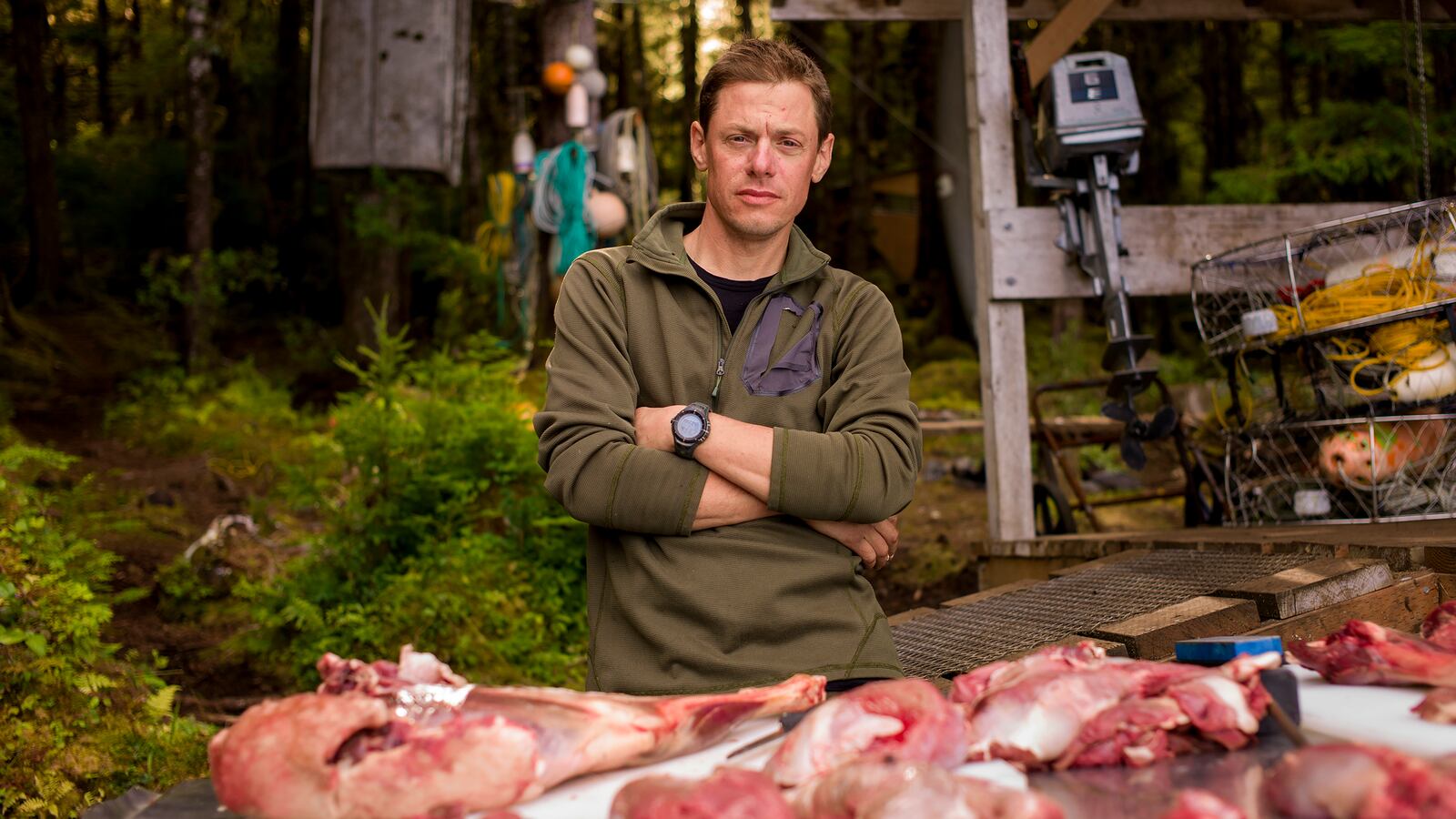Every once in a while events coincide with charming resonance. A few weeks ago, as I listened to the firecracker popping of the last rifle shots in the woods around my Virginia farm as hunting season came to an end, I was also given four excellent hindquarters of venison by a friend. If that wasn’t enough of a sign to get me to start cooking, I also received Steven Rinella’s new cookbook Meateater: Fish and Game Cookbook. Never before have two things so intrinsically complimentary arrived at my house with such a suitable soundtrack.
Immediately, I cracked the book and eyed the recipe for smoked ham in Rinella’s section on big game. His take on the process is straightforward—a rest for four or five days in a wet brine of sugar and salt with some seasoning and curing salt, then into the smoker for a very low and slow roast over the course of a day. Perfect.
Of course, the issue of having big joints of deer in your chest freezer is a singular one. It strikes me that if you do hunt (or fish) you probably already know all about Rinella, and you don’t need me to say that he’s good at this stuff. If, for some reason, you haven’t been told that he’s got a new cookbook, here’s the announcement. Go get it. If you take your meat from the wild in any way, you will find helpful techniques on processing and cooking. If you come from a family of hunters, or have done a lot of it, you will find some things about cleaning and gutting and so forth that you might already know. But many readers, I’m sure, will look at his deft division of a leg of venison into four roasts with some surprise. Anyone new to hunting or fishing will find a wealth of solutions to the mysteries upon which they are embarking.
What strikes me about this book, however, is not how helpful it is for hunters. For while there can be no doubt about that—and certainly everything about the book from the subtitle to the pictures of guns and knives and stumps used as cutting boards announces that as its intent—it is to be expected. What is far more interesting is how useful this book is for people who don’t hunt, who don’t have game to process.
We have long ago reversed the proper trust system of food—we trust the supermarket Styrofoam tray more than the plate of game from the outdoors.

What we’ve forgotten along the way is that all meat was once on the hoof, in the water, on the wing—or at least closely resembled its natural cousins. Having forgotten that, we seem to have sacrificed many valuable skills and techniques involved in the transforming of an animal into food. (As well as picking up the nasty habit of only eating the popular parts of an animal and not making use of all the meat—no matter how tedious to prepare.)
What struck me in his pages, is that many of the animals featured may be purchased, and that all of his techniques on processing them were so solid that they would serve well anyone who has stood in front of a cutting board wondering how to section a Perdue chicken. Birds are all essentially shaped the same way, some are longer than others, and they, of course, vary in size. So, if you buy your birds, simply skip the steps about how to pluck the feathers and jump ahead to the knife work.
What’s more, due to Rinella’s use of different types of game as an organizing principle, the book is wonderfully varied. There are recipes for goose pastrami, tea smoked duck, marrow bones and hot pots. Because he is not pinned to a restaurant or a region, Rinella is free to include recipes from all over the world, at varying levels of difficulty. He douses salmon in tequila to make a cilantro hinted gravlax, and fills up big pots to make a crab boil.
Certainly, the grilled lobster will work whether you got your lobsters out of the ocean or out of the tank in the back of the grocery store. And I know very well that I am supposed to say that his recipe for linguine with clams and chorizo will be vastly superior if you wrestle the clams from the water yourself, and, sure, why not. If nothing else, the work of doing the dredging will build up your appetite.
His recipe for wild hog Milanese particularly intrigued me. First, in a wonderfully loose and casual fashion he informs us that pretty much every culture has a recipe for hammering ingredients super thin, coating them with bread crumbs and then frying them. It doesn’t matter if you call it schnitzel or escalope. “I’ve done this with everything ranging from halibut to wild turkey, so use your imagination,” he writes. The recipe itself is bombproof—a fried cutlet topped with dressed peppery greens—is one of the world’s most versatile and pleasant dishes.
Is this a cookbook, as it claims, for every hunter and angler? Of course it is. But it’s also a cookbook for everyone else.






